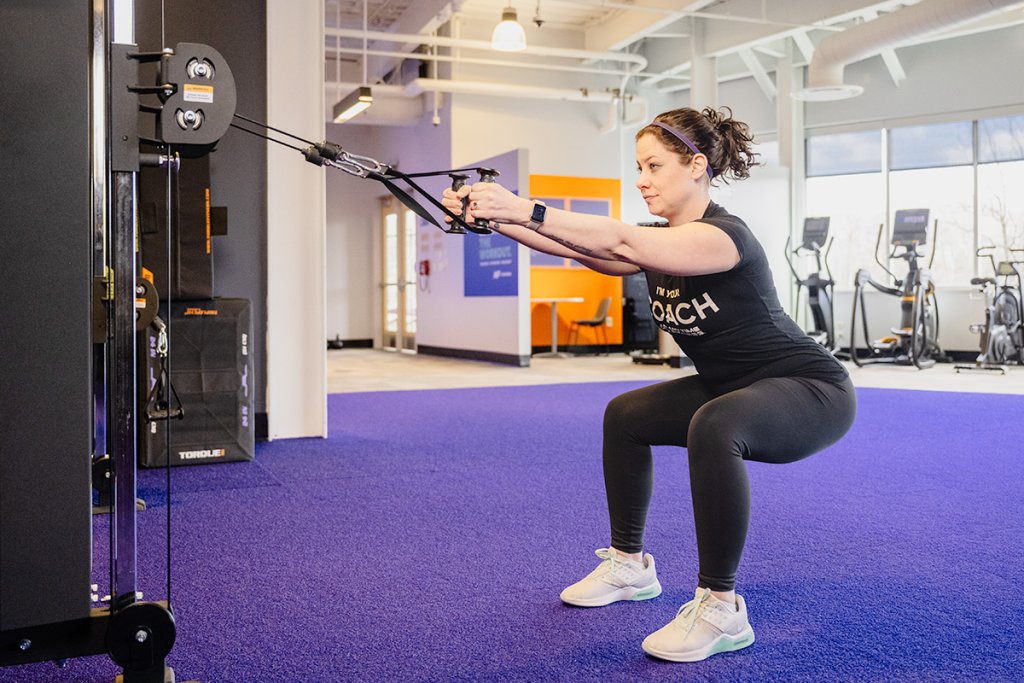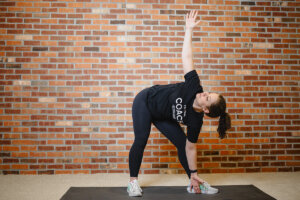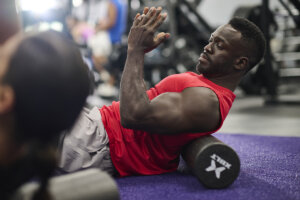The posterior chain: It sounds complicated, but it’s just referring to the muscles in the back of your body. While its definition is simple, the posterior chain plays a vital role in your daily life, and strong leg and back muscles can help prevent issues like lower back pain, muscular injuries, and tightness.
Fortunately, strength training can prevent and alleviate some of the effects of weak back and leg muscles. Let’s talk about the posterior chain, what it is, and why it’s important — we’ve even included a legs and back workout to strengthen your posterior chain muscles.
What is the posterior chain?
As mentioned, the posterior chain is the group of muscles that make up the back half of your body, from your calves to your shoulders.
Upper body posterior chain muscles:
- Latissimus dorsi
- Teres major
- Rhomboids
- Trapezius
- Biceps brachii
- Posterior deltoids
Lower-body posterior chain muscles:
- Calves
- Hamstring complex
- Gluteal muscles
- Spinal erectors
Why it’s important to train your posterior chain muscles
Your posterior chain muscles work together to help you walk, run, jump, and lift. If one of the muscles of the posterior chain isn’t functioning properly, your risk for injury increases exponentially.
Supporting your posterior chain with a strength-training program that includes muscle-building leg workouts and lower back workouts not only decreases your risk for injury and improves overall athletic performance, but it also makes it easier to perform everyday activities.
How to incorporate leg and back exercises into your workout program
The current Physical Activity Guidelines for Americans call for 150 minutes of moderate to intense physical activity per week for adults, with two days of muscle-strengthening activity.
On one of those strength training days, you may want to consider doing a functional leg workout or back day workout that includes posterior chain exercises, such as:
Legs and Back Workout to Strengthen the Posterior Chain
Time: 45 minutes | 2 circuits | 3 leg and back exercises per circuit
How to do this workout:
Finish circuit A before moving onto circuit B. Rest for 30–60 seconds between each set. You’ll complete 2–3 total rounds of posterior chain exercises per circuit, depending on your workout plan and the weights you’re using.
Leg and back exercises – Circuit A
Perform two to three rounds of circuit A before moving onto circuit B. Rest for 30–60 seconds between each set in circuit A.
Hip Hinge to Row
Equipment needed: Resistance bands or cables
Muscles worked: Glutes, hamstrings, lower back
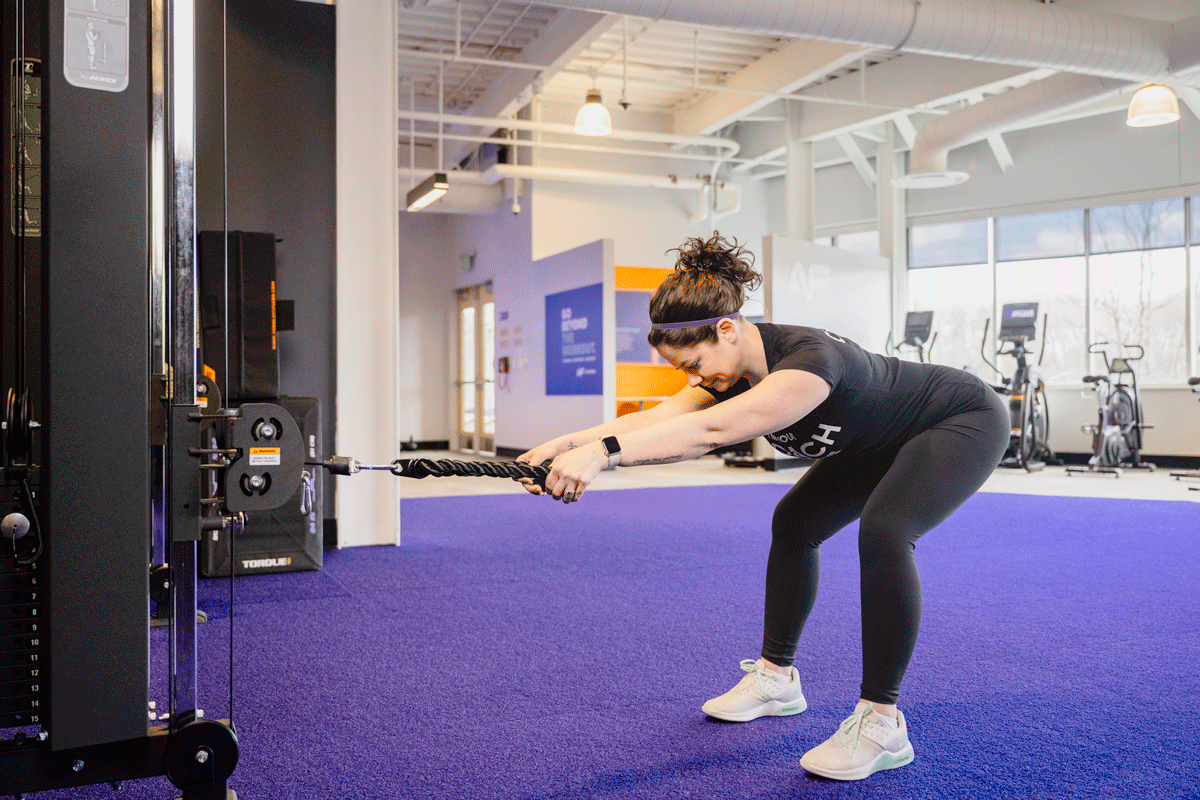
How to:
- Set the weight with the cable machine pins. Use a weight that’s challenging but doesn’t compromise your form.
- Stand with your feet hip-width apart in front of a band or cable anchored low.
- Hinge and push your hips back while maintaining a slight bend in your knees. Keep your back straight, chest up, and shoulders back during the hip hinge.
- Grip the cable handle with both hands, ensuring a firm hold. Your hands should be shoulder-width apart or slightly wider.
- While maintaining the hip hinge position, straighten your hips and knees to stand upright.
- Once you are fully upright, initiate the cable row by pulling the handle toward your lower chest and bending your elbows.
- Reverse the rowing movement, extending your arms to lower the cable handle back to the starting position, and repeat.
- Perform 12–15 reps per set.
Sumo Dumbbell Deadlift
Equipment needed: Dumbbells or kettlebell
Muscles worked: Quadriceps, hamstrings, glutes, lower back, upper back

How to:
- Stand with your feet slightly wider than your shoulders, with the toes pointed outward and dumbbell between your feet.
- Hinge your hips back and down to grab the weight. Lift the weight by driving your hips up and forward.
- Keep your arms extended straight and your back flat throughout the exercise. Lower the weight back to the floor, pushing your hips back.
- Perform 8–12 reps per set.
Kettlebell Swing
Equipment needed: Kettlebell
Muscles worked: Hamstrings, glutes, hip adductors, quads, deltoids, triceps, biceps, core
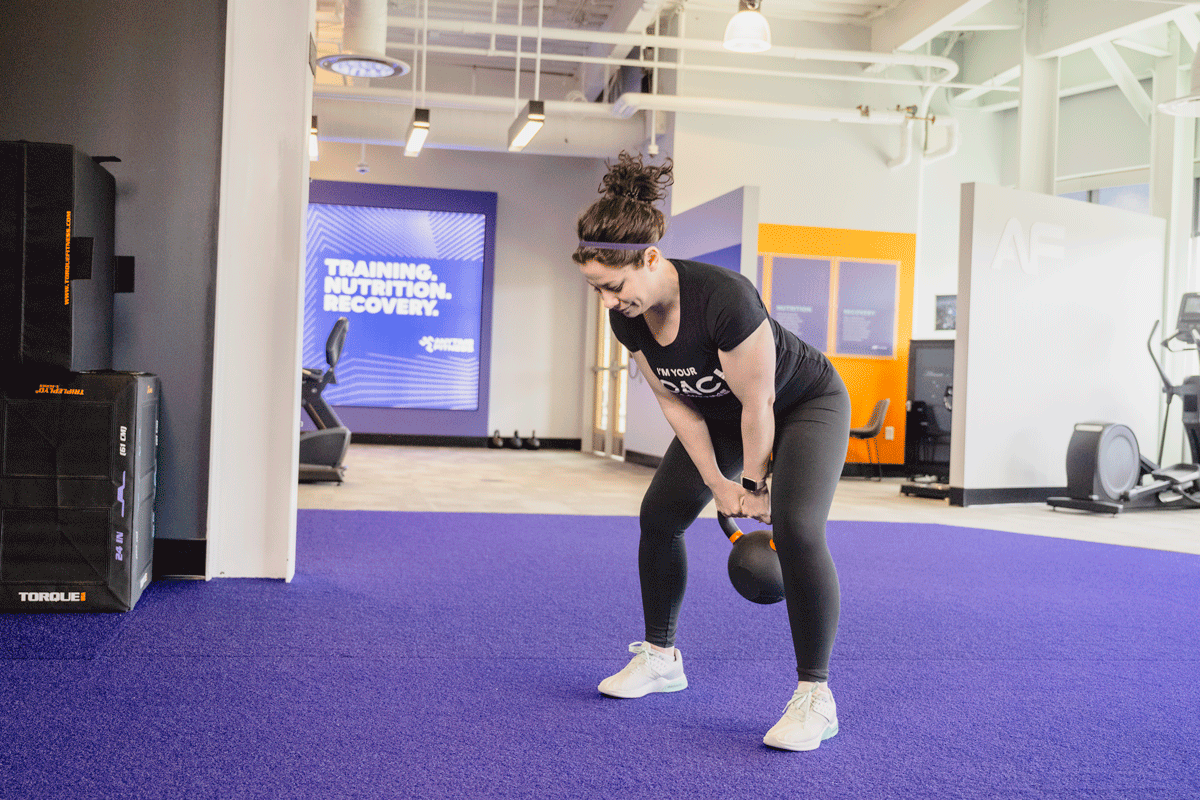
How to:
- Start in a squat position, holding a kettlebell in both hands between your legs with your arms straight.
- Thrust your hips forward, swinging the kettlebell out and up to just over shoulder height with your arms straight.
- Allow the kettlebell to fall forward, guiding it back down along the same path, then repeat.
- Perform 12–15 reps per set.
Variation: Perform 8–12 reps on each side with a single arm.
Leg and back exercises – Circuit B
Perform two to three rounds of circuit B. Rest for 30–60 seconds between each set in circuit B.
Single-Leg Dumbbell Romanian Deadlift
Equipment needed: Dumbbell
Muscles worked: Glutes, hamstrings, lower back, traps
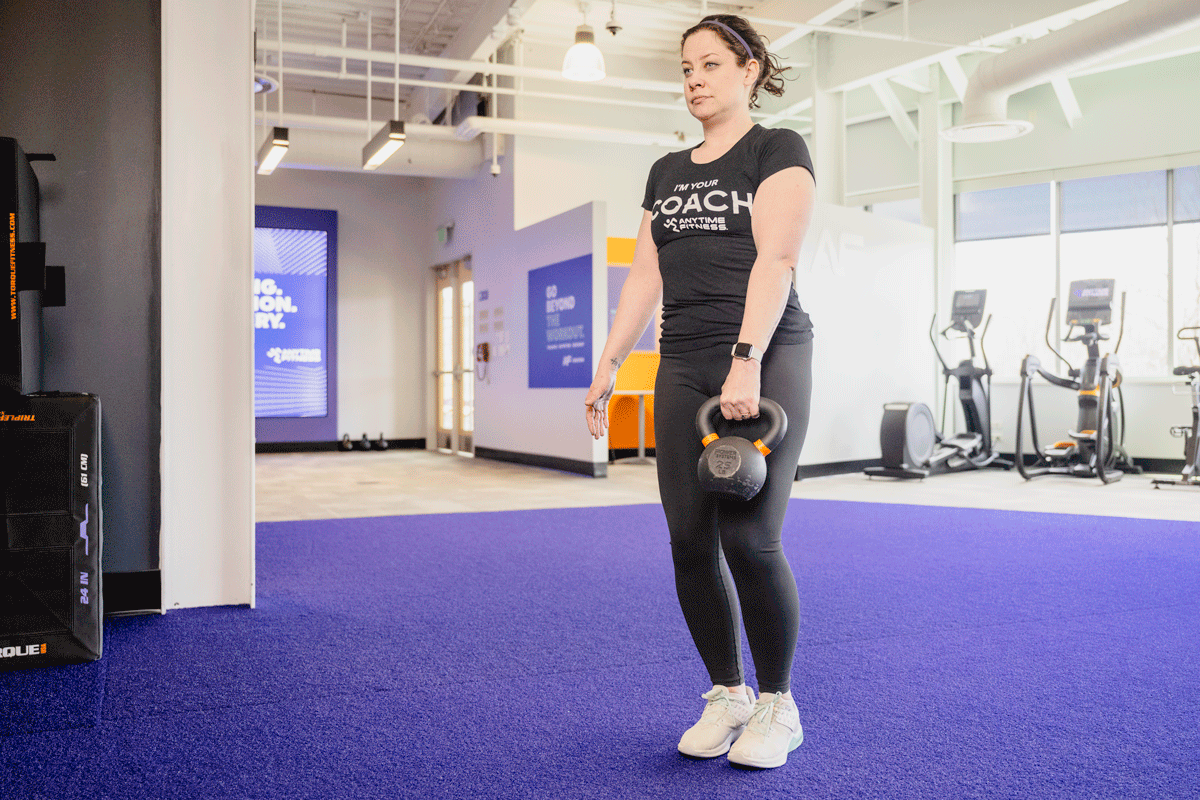
How to:
- Stand upright, holding the dumbbells by your sides with your arms straight.
- Shift your bodyweight to one leg, hinge at your hips, and lower your torso, lifting the other leg straight out behind you.
- Reach the kettlebell toward the floor, keeping a soft bend in your standing leg. Keep your back flat throughout the exercise.
- When the kettlebell is about knee-height, squeeze your standing-leg glute to return to the upright position.
- Perform 8–12 reps on each side per set. Complete all reps on one side before switching to the other side.
Squat to Row
Equipment needed: Cables
Muscles worked: Lats, quads, abs, biceps, calves, hamstrings

How to:
- Start in a squat position holding the cable handles in both hands in front with your arms straight.
- Stand upright and row your wrists in toward your ribcage, squeezing your shoulder blades together.
- Lower back to the squat and straighten your arms back in front.
- Perform 12–15 reps per set.
Variation: Do 8–12 reps on each side in a single-leg squat to row.
Single-Arm Kettlebell Swing Clean
Equipment needed: Kettlebell
Muscles worked: Hamstrings, quads, glutes, traps, deltoids, rhomboids, core, biceps

How to:
- Start with your feet shoulder-width apart and the kettlebell racked at shoulder height.
- Hinge your hips slightly backward and press the kettlebell off your shoulder, allowing it to descend into a kettlebell swing.
- Thrust your hips forward to complete the swing, catching the kettlebell at shoulder height. Keep your elbow pinned to your torso to protect your shoulder.
- Perform 8–12 reps on each side per set. Complete all reps on one side before switching to the other side.
The benefits of compound exercises
This legs and back workout plan features several compound exercises, which work multiple muscle groups at the same time. A strength training program that features compound exercises can help:
- Build full-body strength in a shorter amount of time
- Burn more calories by engaging more muscles
- Improve your coordination and balance
- Train your body for everyday movements
A note on nutrition and strength training
When it comes to health and overall fitness, your workout plan is just part of the puzzle. Proper nutrition is key to supporting your workout goals, whether that’s strengthening your posterior chain muscles or training for a half-marathon. Fueling a well-rounded workout routine with healthy meals — especially ones that are rich in protein and carbohydrates — enhances your performance, provides energy, supports muscle growth, and aids in recovery.
A final note on leg and back workouts
When you’re training your posterior chain — whether it’s a back day workout, muscle-building leg workout, or a lower back workout — always listen to your body and make adjustments as needed. Remember to use a weight that challenges you but still allows you to maintain proper form and control your movement, and ask a Coach for support if necessary. And of course, never skip your cooldown.
More posterior chain workouts to strengthen your legs and back
Loved this leg and back workout? Try one of these workout plans during your next gym session.
Want personalized support and workout plans tailored to your specific goals? Work with an Anytime Fitness Coach.
